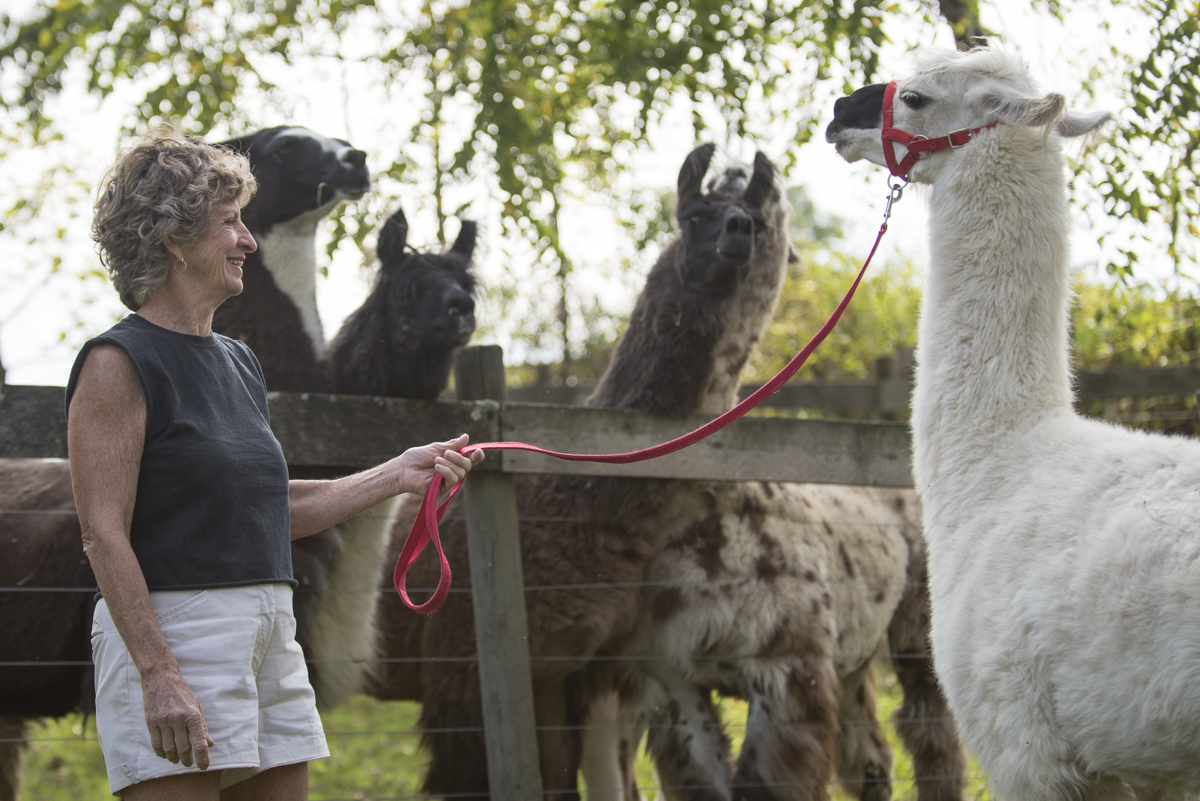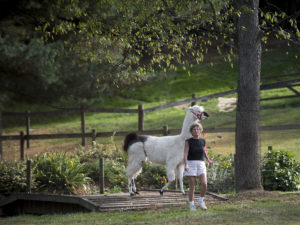
30 years ago, Donna and Jack Moore had no idea what they were getting themselves into—a lifetime of working with wooly creatures.
The two were educators from Cleveland Ohio. He was a superintendent; she was an English teacher.
Jack’s health was declining, so they decided to travel to Cypress Gardens for a break.
Near a fence, they spotted a fluffy, tiny animal laying defenseless. Born and raised on a farm in Perry County, Donna knew the baby animal should not be alone.
She turned to talk with Jack, but he was still standing by the fence, transfixed by the baby llama.
I said, ‘Jack’—I’m going to bawl telling you this—‘Why are you looking at that animal?’ And he said, ‘That’s the most beautiful animal I’ve ever seen in my life.’ And then the next thing he said to me changed our entire life. He said, ‘We’re going to raise them.’”
Donna recalls asking, nervously, “Well, what is it?”
“I have no idea,” Jack shrugged.
About a week later, Jack sold their Cleveland home to the first people who walked through it.
They didn’t know it then, but they soon would become llama pioneers—showing at the state fair for 30 years and eventually being inducted in the Ohio State Fair Hall of Fame in July 2017.
But first, they needed to build a farm.
Today, hidden behind the trees, a gravel lane leads to 25 acres of llama paradise. This is Timberlane Llamas in Somerset, the Perry County farm Donna and Jack built themselves. It took 17 years to clear and build llama heaven. The only equipment they initially had was a push mower and a pair of hand clippers. The educators were rebuilding and re-educating themselves; this time the subject was llamas.

Following Jack’s death in 2004, Donna continued to manage the farm. “Had I not had llamas when Jack died, I probably would not have lived, to be honest with you,” Donna recalls. “I had so much pain in my heart; I knew I was going to die. The llamas saved my life. You come out and you grab one, and you just cry and cry into their neck, and then you get it out of your system. And you go, well, I can live another day.”
Jack had been an industrial arts teacher in Cleveland. Had Donna married a math or biology teacher, she says, they probably wouldn’t have all these beautiful buildings because they couldn’t have afforded it. A barn for the females, sheds for the males and a llamazine, a pickup truck with a wooden carrier—all were built by Jack.
Over the years, the couple transported the llamas close to 350 visits to schools, nursing homes, parades, weddings and funerals. The llamas easily jumped three feet into the llamazine and kushed, or lied down for the trips.
The couple’s curiosity to educate themselves took them on travels west, going from one convention to the next. They couldn’t pay the registration fee, but they were willing to guard the animals to learn from the experts.
The duo became so knowledgeable regarding llamas—breeding, birthing, nutrition and fiber uses—that they were asked to teach other people about llamas in the eastern part of the U.S.
Early on, they contacted the Ohio State Fair, dreaming of being one of the first to showcase llamas. The animals would only be deemed domestic if a moat or an 8-foot fence were built around their farm. People worried of the potential diseases exotic animals carried.
For half a day, Donna and Jack educated staff at the Department of Agriculture in Columbus, and changed the status from exotic to domestic.
In 1988, Donna and Jack brought the first llama show in the world to Columbus.
At 73 years of age, Donna plans to operate Timberlane Llamas until she finds the right people to take over.
But that’s the future. Today is what Donna calls a perfect llama day. The temperature isn’t scorching. Just some fans buzz throughout the barn, creating a cool environment.
Ever the learner, educator and caretaker, Donna adores her animals. It’s what she and her husband called “llama love.”